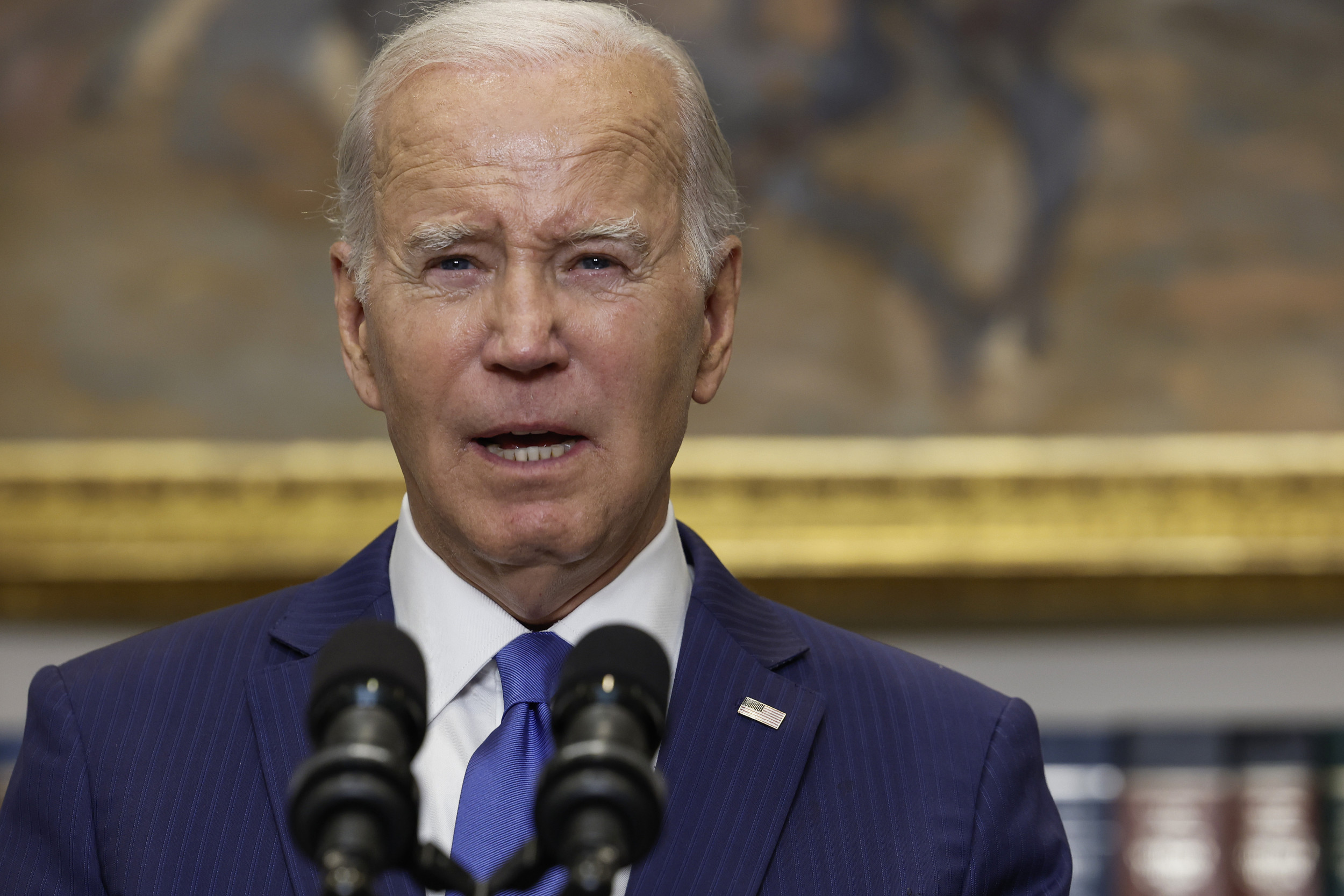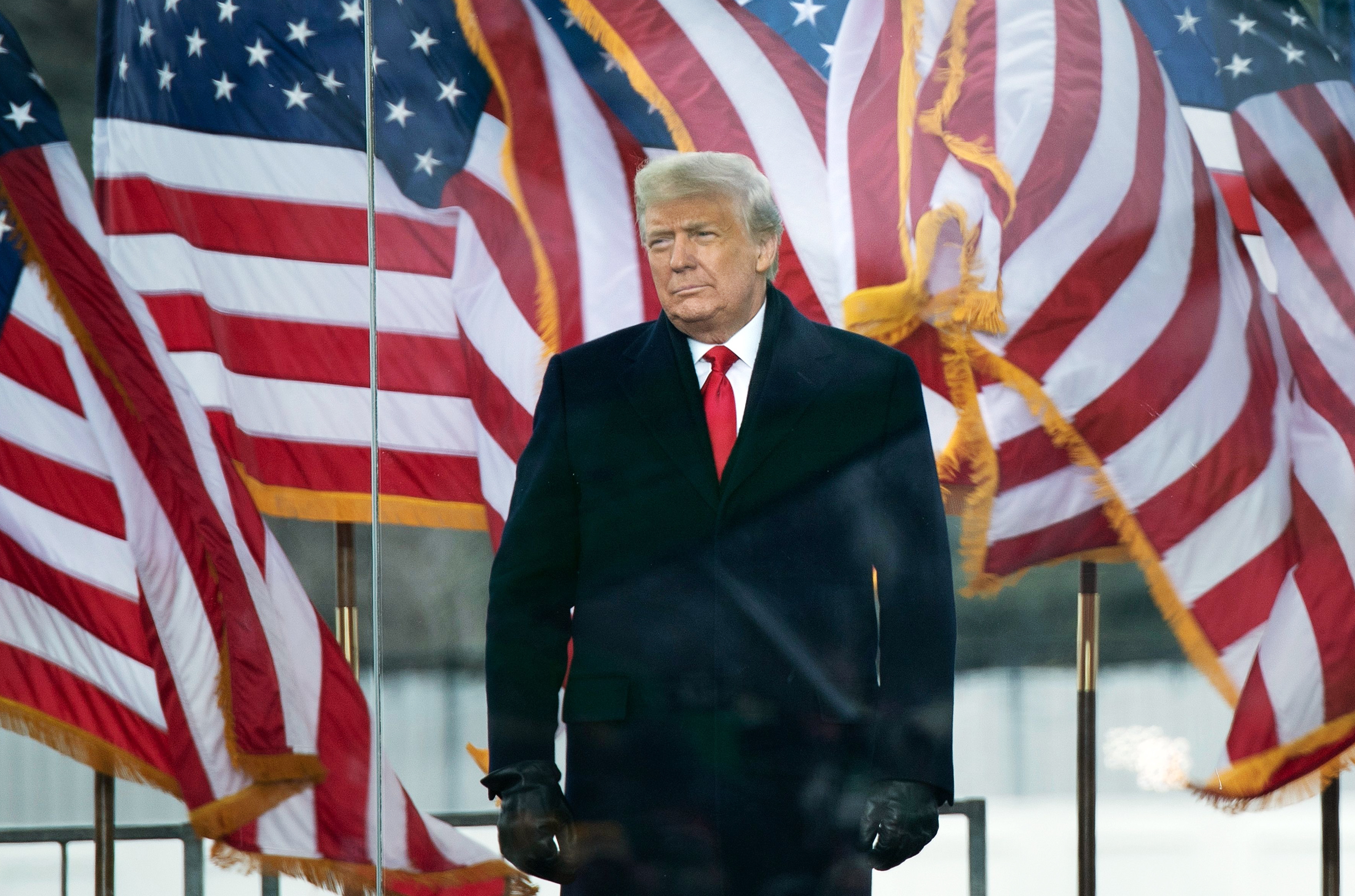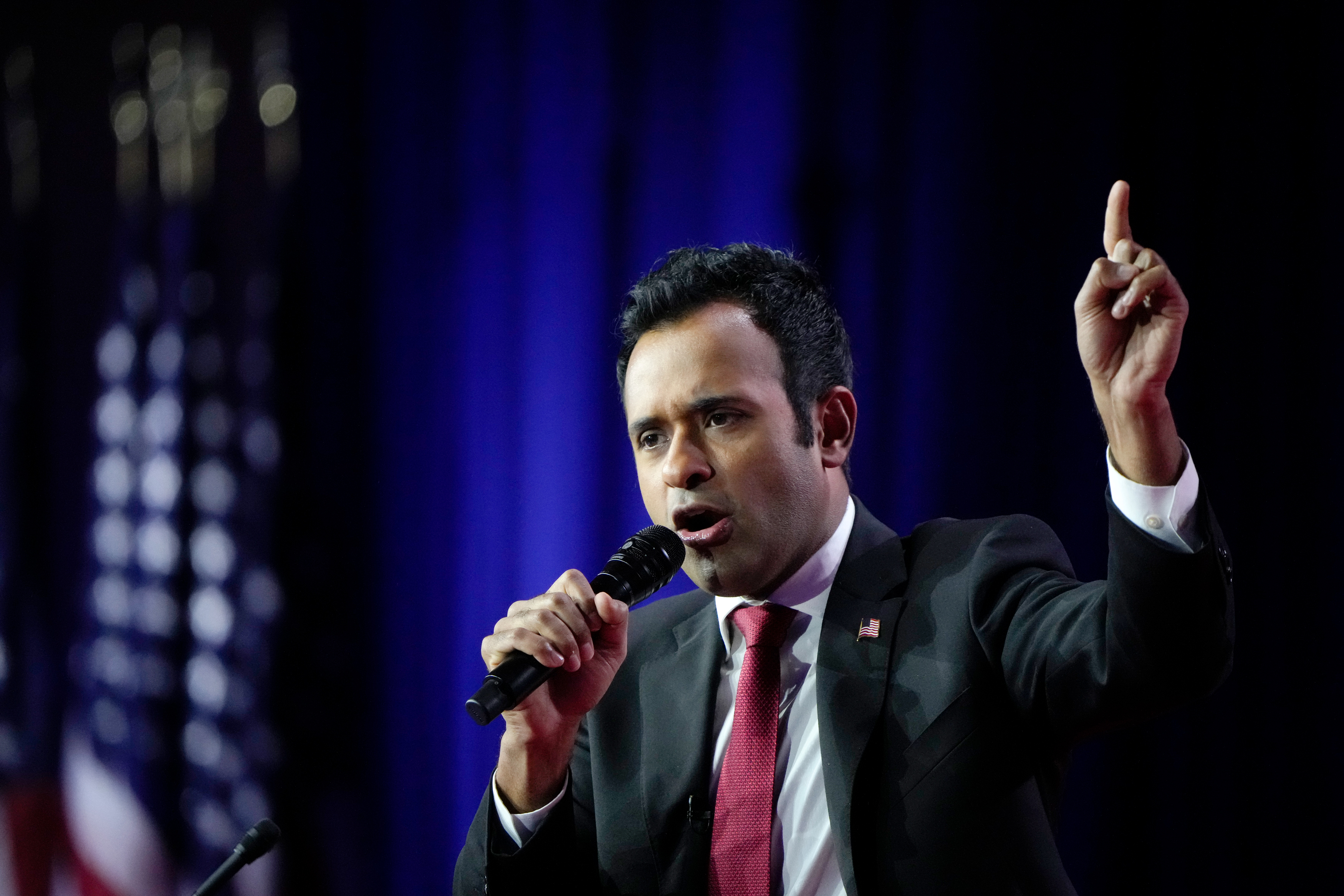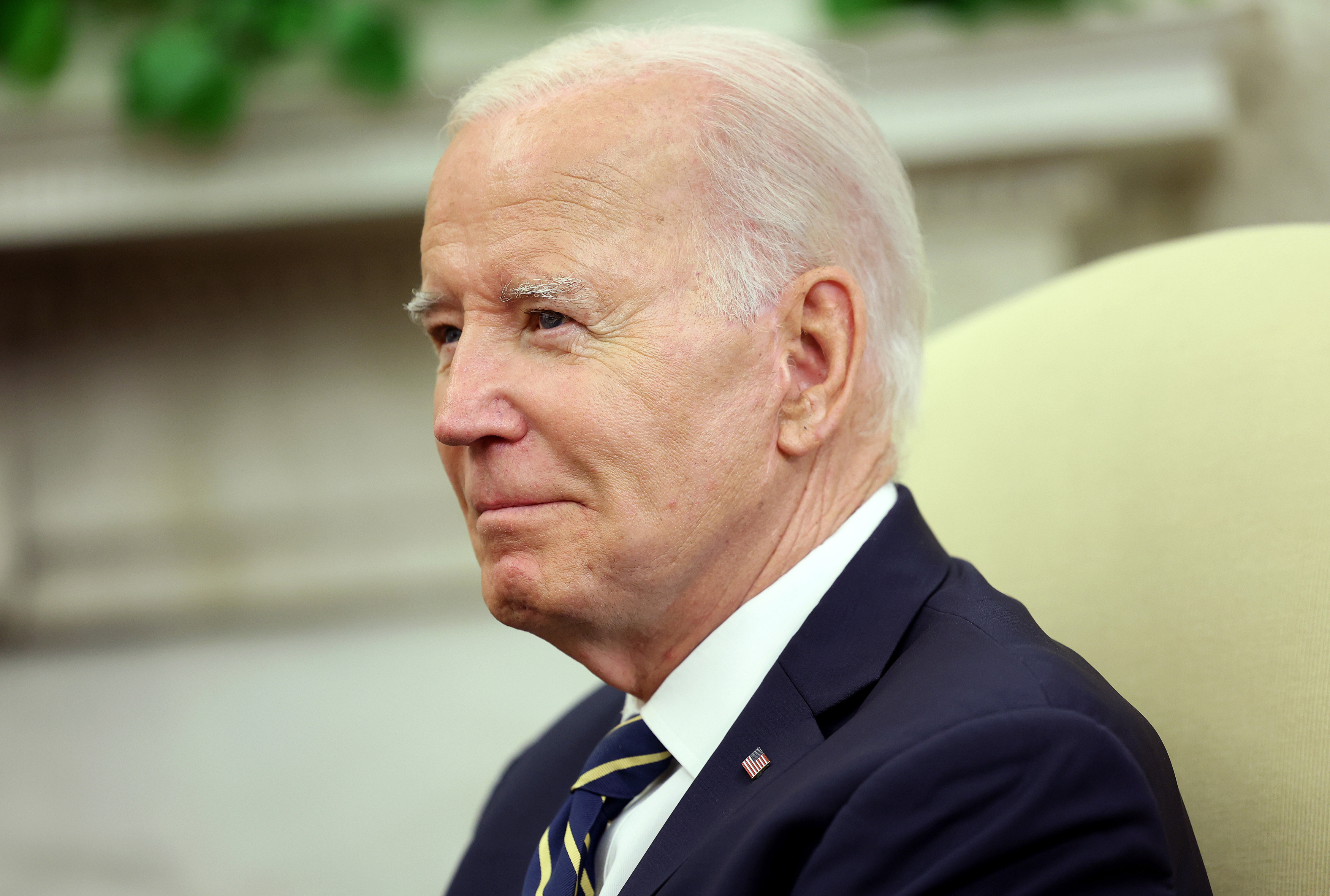As the United States and China fail to resolve one of the most serious and sensitive disputes in their bilateral relationship—the status of Taiwan—both nations are preparing for the prospect of an all-out conflict in the Pacific, even if neither side actively seeks such a devastating outcome.
Addressing reporters Tuesday in Beijing, Chinese Foreign Minister Qin Gang, who served as ambassador to the U.S. until late last year, asserted that "conflict and confrontation" between the two top powers would be inevitable if Washington did not change course on its approach to the People's Republic.
And just last week, U.S. Army Secretary Christine Wormuth laid out a strategy for how the Pentagon would be "prepared to fight and win that war" with China should their feud come to active blows.
Such a battle, however, would present unique and deeply complex challenges for the U.S. as it scrambled to move personnel and equipment thousands of miles across the world's largest ocean. Altogether, U.S. Indo-Pacific Command comprises some 105 million square miles, encompassing about half of the Earth's surface, the vast majority of it being open sea.
Major General John Klein, commander of the U.S. Air Force Expeditionary Center, calls it "the tyranny of distance."
"Unlike other areas of the world in which resources can be driven, this area requires aircraft or ships for transportation," Klein told Newsweek. "This is why our Global Air Mobility Support System (GAMSS) is such a crucial piece of the Department of Defense's global logistic network."
"As we move forward, the GAMSS will utilize small, deployable teams of Airmen known as Air Mobility Teams that can provide basic air mobility support functions in non-fixed locations," he added. "In other words, they will provide aerial port service and enroute maintenance at forward operating sites."
Such sites would prove pivotal in the event of a conflict so far from U.S. shores, and Klein vowed to bring a "combination of speed, range, flexibility and responsiveness" unseen by any other methods of transport.
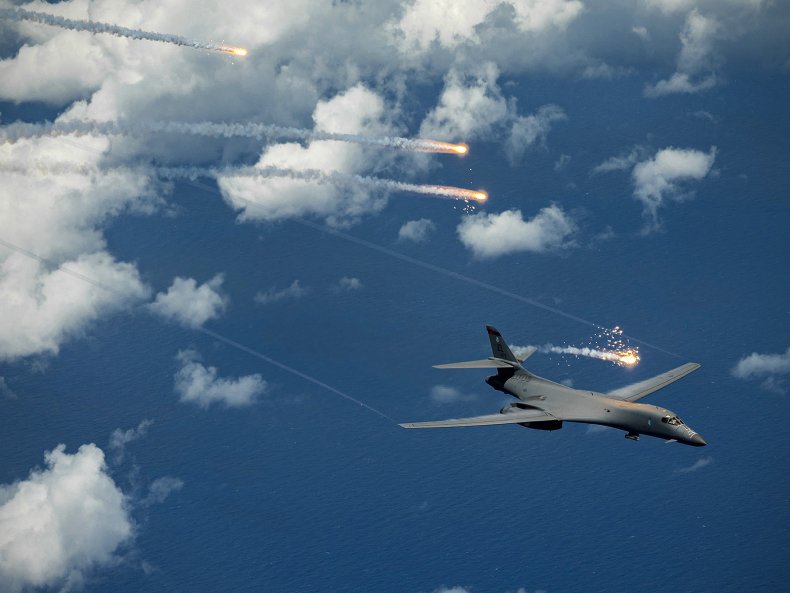
Executing the GAMSS mission is the Air Mobility Command (AMC) and what Klein describes as its "fixed enroute system." Within this system is the Air Mobility Operations Wings (AMOW), which Klein notes "are considered 'forward located.'"
"This structure is essential to providing a responsive fixed enroute network because it ensures the AMOW commander has the authority to shift assets internally to keep all nodes of the enroute 'theater' at a capacity commensurate with the operational demand," the Major General said. "The GAMSS provides the foundational structure for the lift and shift agility required to ensure the winning scheme of maneuver."
While a conflict on the level of the one that has the potential to break out with China has no comparison short of the Pacific Theater of World War II, recent experiences have informed efforts to modify the U.S. Air Force response in crisis situations. When the U.S. withdrawal from Afghanistan devolved into a scramble to Hamid Karzai International Airport (HKIA) as the Taliban quickly took the capital Kabul, the U.S. Air Force utilized contingency response (CR) units to aid in the hectic airlift.
"Using commonalities with CR forces, we are now working to create a deployable Demand Force Team (DFT) in the form of Air Mobility Teams (AMTs) to maneuver and Command and Control (C2) within and beyond the established enroute structure," Klein said. "We have been focused on developing options for the Command Relationships and C2 of resources (manpower & equipment) that enable mission command within our Air Operations Centers."
"We are working to create a framework to re-establish force packaging options using the triad of AMOW assigned aerial port, aircraft & vehicle maintenance, and C2 operations within Air Mobility Squadrons," he added. "Based on the utilization of AMTs we are exploring a more robust and capable Air Mobility Element DFT."
Critical to any U.S. war effort in the Pacific would be the role played by the sprawling network of U.S. bases already in the region. Among the most strategically important locations is Japan, a former World War II foe that has become one of the robust U.S. allies in the effort to invest in strengthening military posture in Asia.
Based in Okinawa, Lieutenant General James Bierman serves as the commanding general of the III Marines Expeditionary Force and U.S. Marines Forces Japan. He explained the importance of working alongside allies and partners, including through a growing tempo of joint exercises, as well as where the U.S. Marine Corps come into play in this effort.
"When we train with our allies and partners in the region, we do so with a purpose, and that is to serve as part of Indo-Pacific Command's stand in force," Bierman told Newsweek. "Our job is to persist and operate in any potential adversary's weapons engagement zone, seize and defend key maritime terrain, integrate with and expand the joint network of sensors and command and control capabilities, and establish long-range precision fires to support sea denial and sea control efforts with our Allies, the Fleet, and the broader Joint Force."
The forward-deployed III Marines Expeditionary Force (III MEF) is uniquely postured alongside counterparts in the Japan Self-Defense Forces and also serves as a stand-in force to support other allies and partners in the region.
"Up front, presence matters. We're here, within the first island chain, with our allies and partners," Bierman said. "We too have skin in the game in support of our collective nations' interests. While III MEF represents a critical and capable component of Indo-Pacific Command's Stand-In Force, our true strength is realized through the rehearsal and application of joint and combined capabilities."
The concept of island chains was conceived in the wake of World War II, as the U.S. developed strategies to contain another leading communist power, the Soviet Union, a former World War II ally, in the earliest years of the Cold War.
The strategy designates the second island chain as running from its northern-most tip in Japan's eastern Bonin Islands and Volcano Islands toward the Mariana Islands, including the U.S. territory of Guam, home to a rotating nuclear-capable bomber force and a fleet of fast attack submarines. The chain then runs further south through the Caroline Islands divided between Micronesia and Palau and, finally, Indonesia's Western New Guinea.
The first island chain is far closer to Chinese shores, running from a group of northern islands divided between Russian and Japanese control, through the Japanese archipelago, including the southernmost Ryukyu Islands, and passing east of Taiwan, northwest of the Philippines and ending in Asia's largest island of Borneo, which is divided between Brunei, Indonesia and Malaysia.
The Spratly Islands, contested by a number of regional countries and increasingly militarized by China, as well as the coast of Vietnam are also sometimes included.

Taiwan's inclusion in this first island chain has been at the core of Washington's complex ties with Taipei, which was established as the de facto capital by Chinese Nationalists fleeing a civil war against victorious Communists on the mainland in 1949. The U.S. recognized Taiwan for three decades and through two major crises with China, until breaking off relations in favor of Beijing in 1979.
But this relationship is at one of its most difficult points since, as Washington has maintained informal yet growing political and military support for Taipei while Beijing claims Taiwan as its own, threatening to reunify the strait by force if necessary. This issue, exacerbated by quarrels over human rights, trade and other territorial disputes, has put U.S.-China ties on the brink.
Amid this precarious geopolitical climate, Bierman said the Marines hold two major responsibilities.
"First is to conduct ourselves in a way that deters aggression, to prevent a war that I think would be catastrophic for the region and all of our collective interests," Bierman said. "Secondly, we have a responsibility to be ready for a conflict if it occurs."
China has also set out to prepare for such a conflict. Pacific warfare, including the U.S.-Japan conflict in the 1940s, has been a central point of study for the People's Liberation Army, and among the most important conclusions has been a need to target what Chinese military researchers see as "the soft rib of American power in the Pacific."
"And what is the soft rib? Logistics," Lyle Goldstein, director of Asia engagement at the Washington, D.C.-based Defense Priorities think tank and a professor at Brown University's Watson Institute for International and Public Affairs, told Newsweek.
Goldstein, who retired from the U.S. Naval War College in 2021 and has spent decades researching Chinese military doctrine, explained that "China has interior lines, that is, at every point of combat, they can bring more firepower quicker, whereas we have exterior lines, we have to get the stuff there, it's much more difficult."
"They know very well their biggest advantage here is interior-exterior lines and logistics, and they have a very good idea of what our logistics look like whenever we upgrade a base in the Pacific, certainly, but elsewhere too," Goldstein said. "They follow that carefully."
He recommended the U.S. also tread carefully in its planning. On this point, Goldstein stresses the need for caution and restraint in navigating the tense waters of the Pacific. He sees the People's Liberation Army as well-positioned to take Taiwan in the event of a conflict, but also sees China as hard-pressed to move forward toward other strategically located positions such as the Philippines, Japan and Hawaii.
"A big debate in Washington should be: 'Is Taiwan a trampoline? If they conquer Taiwan, is Luzon next? Is Honshu next? Is Oahu next?'" Goldstein said. "And I'm very skeptical. I don't think China has the intention or the capability to use Taiwan as a trampoline."
And while he said that only in a "worst-case scenario" is it "conceivable" that China would launch a preemptive strike on U.S. positions, he emphasized that Beijing's designs were focused on Taiwan, and he does "not think China wants to fire first against U.S. forces. They want to force the United States into a position where the U.S. has to make that horrible decision to ignite a U.S.-China war."
As for the People's Liberation Army's own logistics, China has also been proactive in building up its forces with the aims of both deterring a potential conflict and preparing to win one. The Eastern Theater Command and Southern Theater Command, which are primarily responsible for operations in the Pacific, hold near-daily exercises on a range of activities at land, air and sea, including air defense, artillery fire and amphibious landings.
The Pentagon's latest report on Chinese military power, published in November, observed that the People's Liberation Army Rocket Force launched some 135 ballistic missiles in 2021 for training and exercises, more than the rest of the world combined excluding active conflict zones.
And while the U.S. is forced to rely primarily on vulnerable air and sea routes to transport personnel, munitions and firepower, China's comprehensive rail network allows for the relatively quick movement of forces and weapons such as missile systems that have U.S. positions across the Pacific in range. This includes Guam, where earlier this year U.S. Marines opened their first new base in 70 years.
Shortly before the base's opening, an article in the People's Liberation Army outlet National Defense News argued that a recently announced U.S. plan to defend Guam could potentially face "many problems such as difficulties in mobile deployment and the inability to effective guard against drones." As such, the article suggested that the U.S. plan may actually "increase Guam's security vulnerability."
Klein, for his part, acknowledged that, given the expanse of the Pacific theater of operations, "power projection platforms are few and far between," so, "therefore, every Air Base in theater has a purpose." Guam's Andersen Air Force Base, he said, "is no different."
But he said this reality also factored heavily into the Air Force's strategy.
"When we talk about the need to be able to lift and shift AMTs to meet operational requirements, it is vital that we are able to execute that quickly," he said. "Operating locations throughout the Pacific must be postured to connect and conduct Bomber Task Force, Tanker Task Force, Agile Combat Employment, and Dynamic Force Employment operations."
Such adaptability, he argued, "allows any location to become a strategic location to overcome the tyranny of distance that is the Pacific Ocean."
"As the National Defense Strategy has directed us to orient towards the Pacing Challenge," Klein said, "we need to ensure we are postured correctly within the Pacific to meet the needs of our nation if or when that need ever arises."
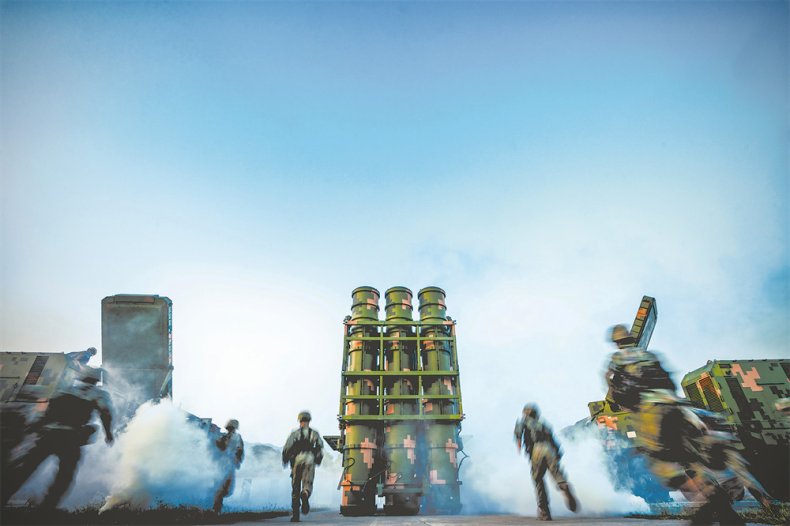
While China may have the upper hand in terms of geography, Hu Bo, director of the China-based South China Sea Probing Initiative, told Newsweek that "distance matters for both sides."
"Generally, distance serve as an advantage for China, and it factors into China's planning for power projection," Hu said. "To some extent, the U.S. can compensate for its distance disadvantage by increasing forward deployments in places like Japan and the Philippines, as well as mobile forces in China's surrounding waters."
"However," he added, "such contributions would not entirely change the disadvantage of American forces operating far from the U.S. mainland."
And yet the Pacific build-up continues on both sides, and not without incident. With an increasingly and potentially dangerous level of mistrust felt by both sides, officials in Beijing and Washington have accused the other of provoking the kind of conditions capable of sparking the kind of conflict both powers say they are trying to avoid.
The Pentagon argued in its latest Chinese military report that "PLA naval vessels and aircraft have exhibited a sharp increase in unsafe and unprofessional behavior in the Indo-Pacific region. Such behavior, which includes "lasing, aerobatics, discharging objects, and activity that impinges upon the ability of nearby aircraft to maneuver safely" runs the risk of causing "a major incident or accident in the region," according to the report.
Hu pointed out that the U.S. military's approach has not been without criticism, either.
"U.S. military operations themselves in China's surrounding waters are not news and not surprising," Hu said, "but the abnormal increase in their frequency, intensity, and pertinence to China in recent years deserves intensive attention."
He argued that "in addition to increasing the risk of close sea and air encounters in peacetime," the U.S. military conducting "highly-intensified military activities in another coastal state's surrounding waters, such as thousands of close-in reconnaissance operations and hundreds of military exercises" marked a "clear violation of the spirit of 'maintaining international peace and security' of the U.N. Charter and 'the peaceful uses of the seas' of the United Nations Convention of the Law of the Sea."
"In this context," Hu added, "China has no choice but to improve its defense capability, which will not make America feel safer."
Corrected on 03/09/2023 at 1:35 p.m. ET. Corrected the rank of the III Marines Expeditionary Force's commanding general as lieutenant general
